
Prof. Dr. Malak A. Al-yawer

At the end of this lecture, the medical student
will be able to
Define Embryology
State the Significance of Embryology
Discuss organ formation
State the significance of cell-signaling
Name the differences between paracrine and
juxtacrine factors
State the mechanism of action of paracrine and
juxtacrine factors
Define GDFs , state their groups and significance in
embryonic development
State the significance of neurotransmitters for
embryological development
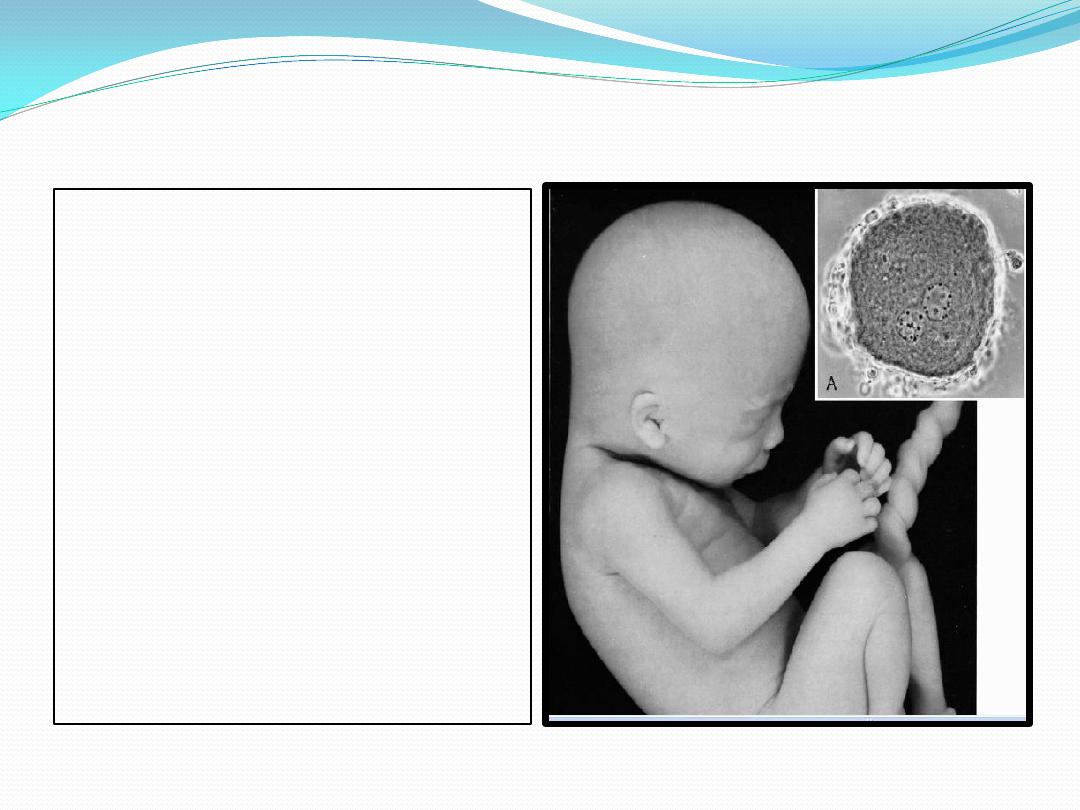
Definition of Embryology
Literally,
embryology
means
the study of embryos; however,
the term generally refers to
prenatal development of
embryos and fetuses.
Developmental anatomy
is the field of embryology
concerned with the changes that
cells, tissues, organs, and the body
as a whole undergo from a germ cell
of each parent to the resulting adult
.
Prenatal development is more rapid
than postnatal development and
results in more striking changes.

SIGNIFICANCE OF EMBRYOLOGY
Bridges the gap between prenatal development
and obstetrics, perinatal medicine, pediatrics, and
clinical anatomy.
Develops knowledge concerning the beginnings of
human life and the changes occurring during
prenatal development.
Is of practical value in helping to understand the
causes of variations in human structure.
Illuminates gross anatomy and explains how
normal and abnormal relations develop.

Induction and Organ Formation
Organs are formed by interactions between cells
and tissues. Most often, one group of cells or
tissues causes another set of cells or tissues to
change their fate, a process called
Induction
.
In each such interaction, one cell type or tissue is
the
inducer
that produces a signal, and one is the
responder
to that signal
Competence
: IS the capacity to respond to such a
signal. It requires activation of the responding
tissue by a competence factor
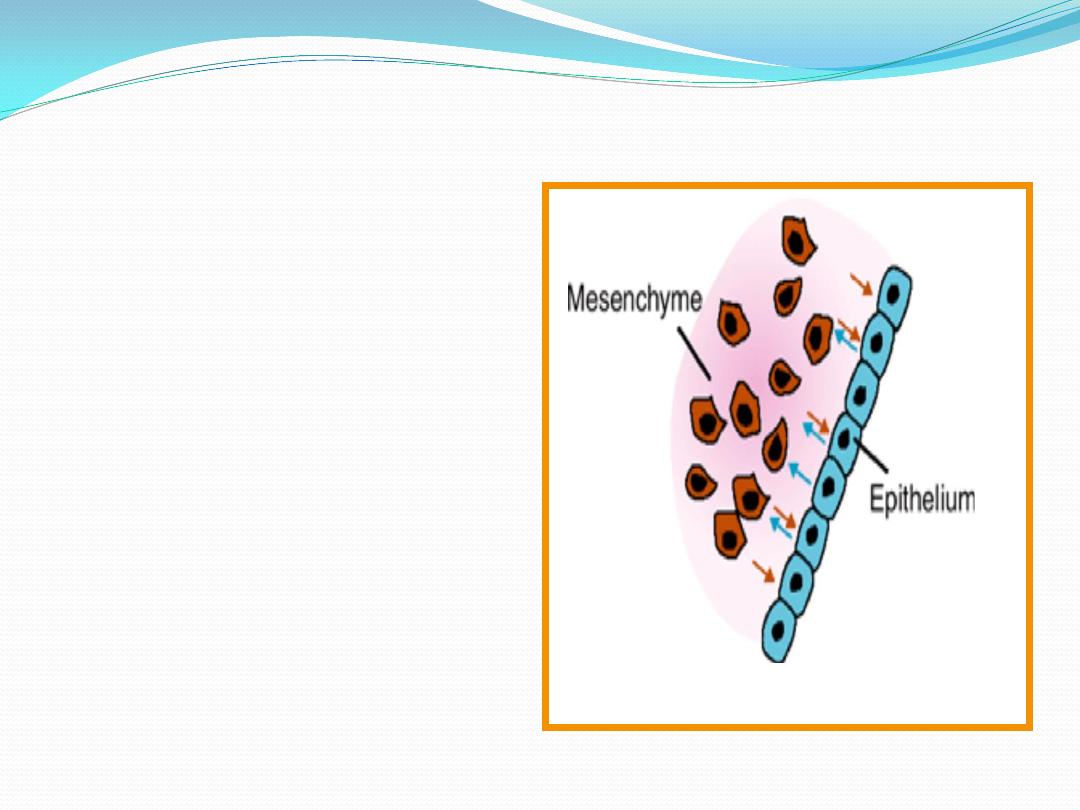
Induction- Epithelial mesenchymal
interactions
Epithelial cells are joined
together in tubes or sheets,
whereas mesenchymal cells
are fibroblastic in appearance
and dispersed in extracellular
matrices
Although an initial signal by
the inducer to the responder
initiates the inductive event,
cross talk between the two
tissues or cell types is
essential for differentiation
to continue (arrows in this
figure ).
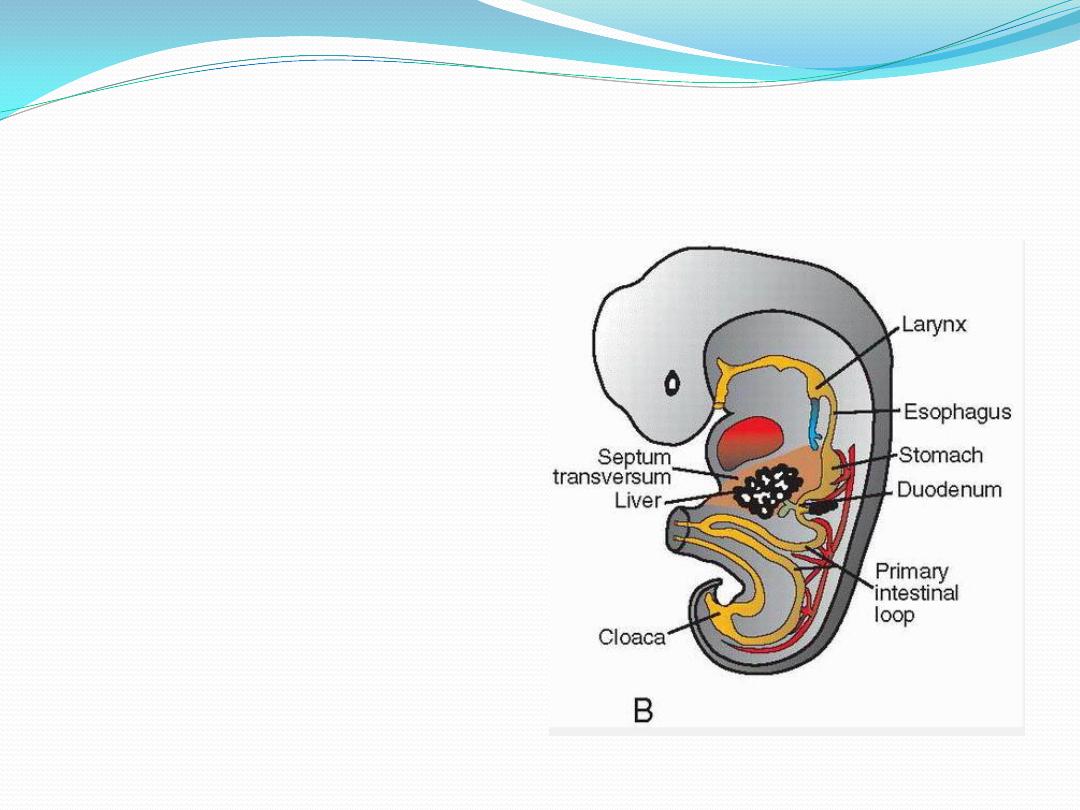
Examples of epithelial -
mesenchymal interactions
gut endoderm and
surrounding
mesenchyme to produce
gut-derived organs,
including the liver and
pancreas;
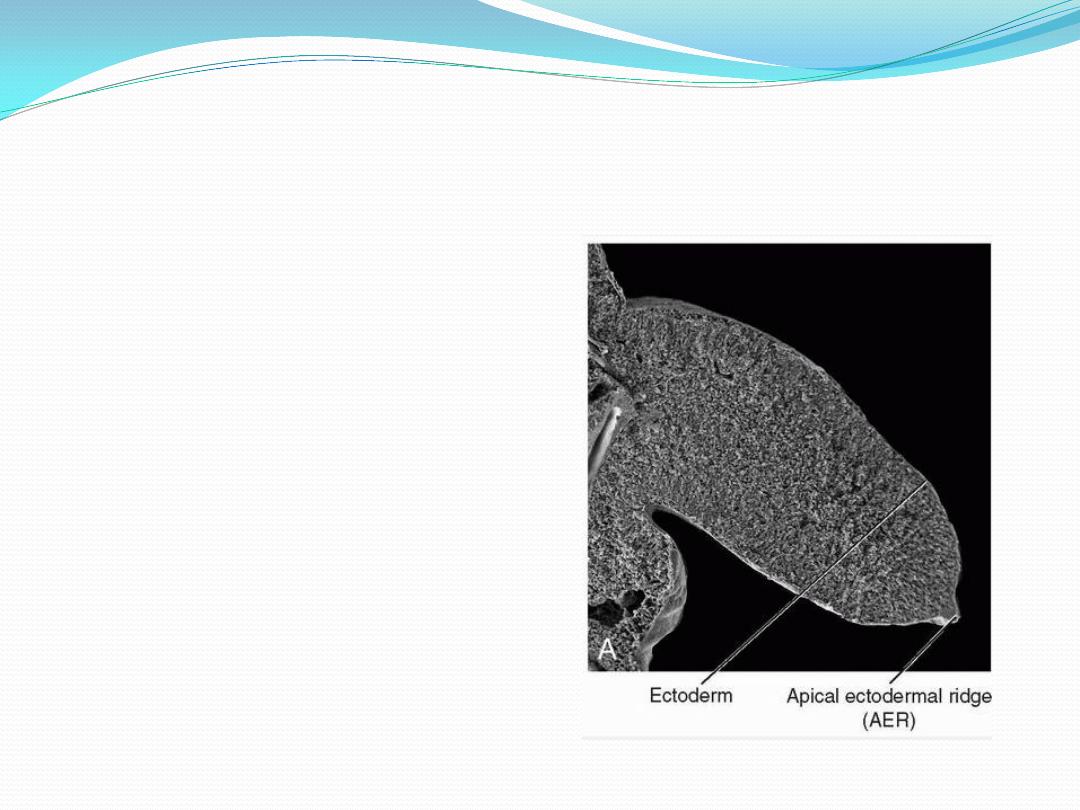
Examples of epithelial -
mesenchymal interactions
limb mesenchyme with
overlying ectoderm
(epithelium) to produce
limb outgrowth and
differentiation
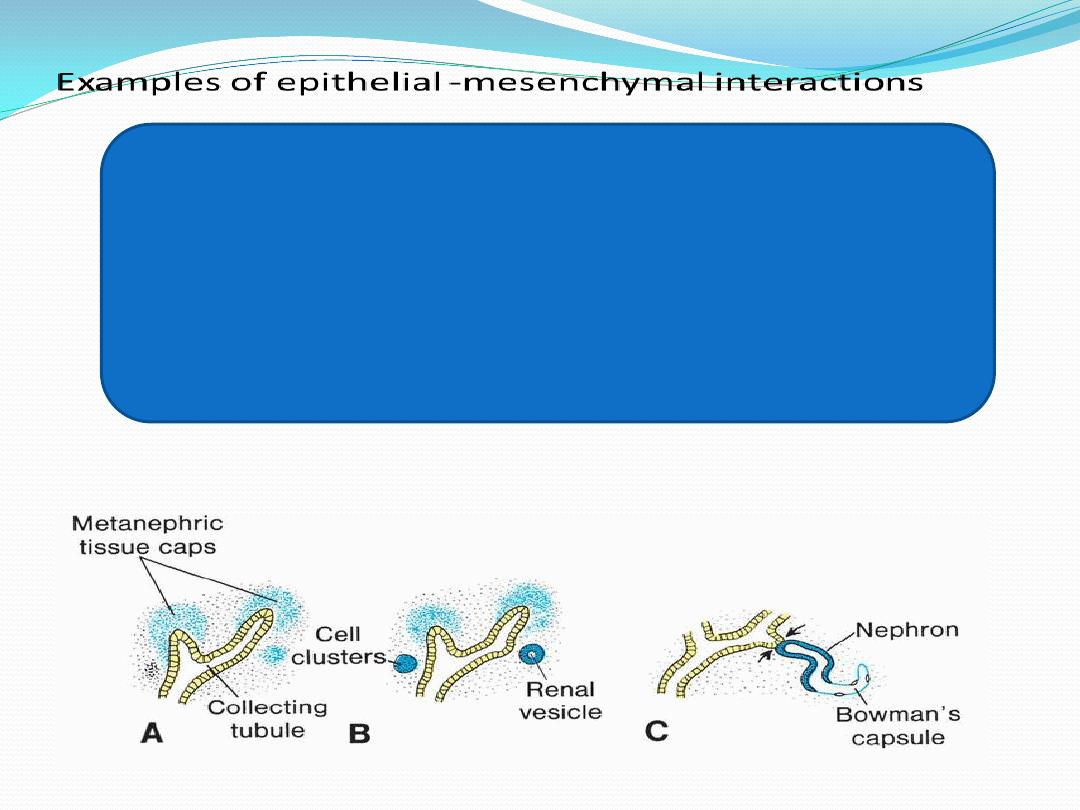
endoderm of the ureteric bud and
mesenchyme from the metanephric
blastema to produce nephrons in the
kidney.
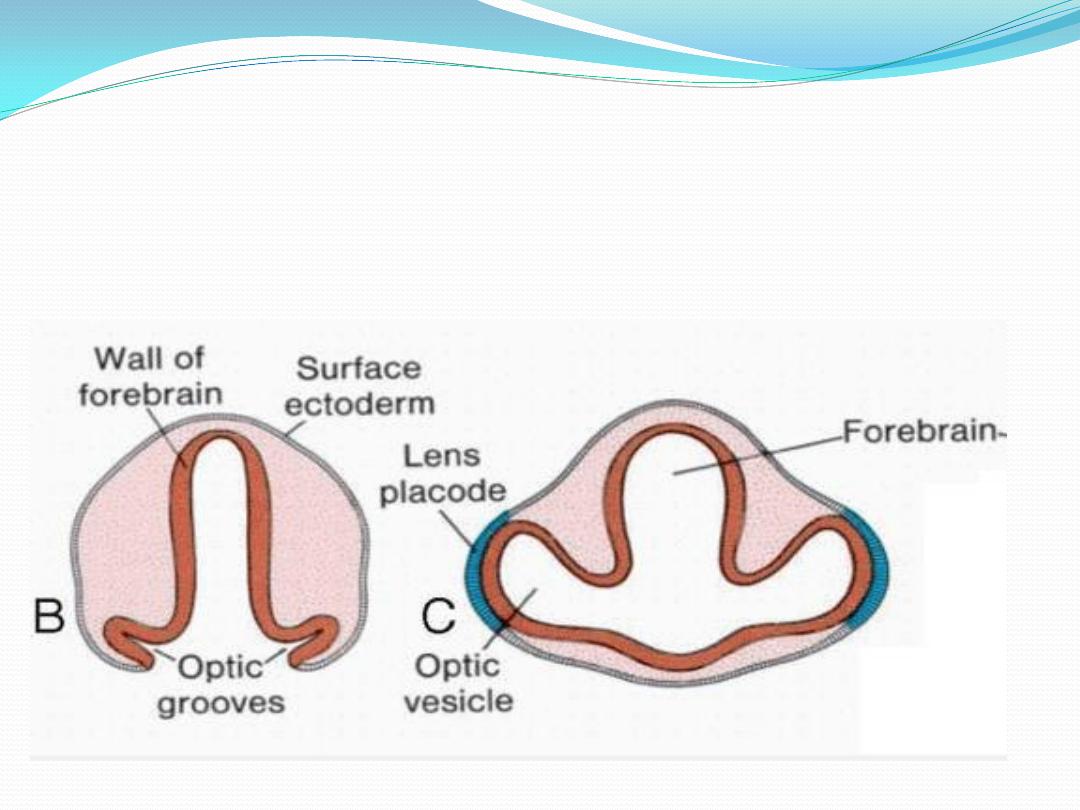
Inductive interactions can also
occur between two epithelial
tissues
such as induction of the lens by epithelium of the optic
cup.

Cell Signaling
Cell-to-cell signaling is essential for
1.
induction,
2.
conference of competency to respond,
3.
cross-talk between inducing and responding cells.
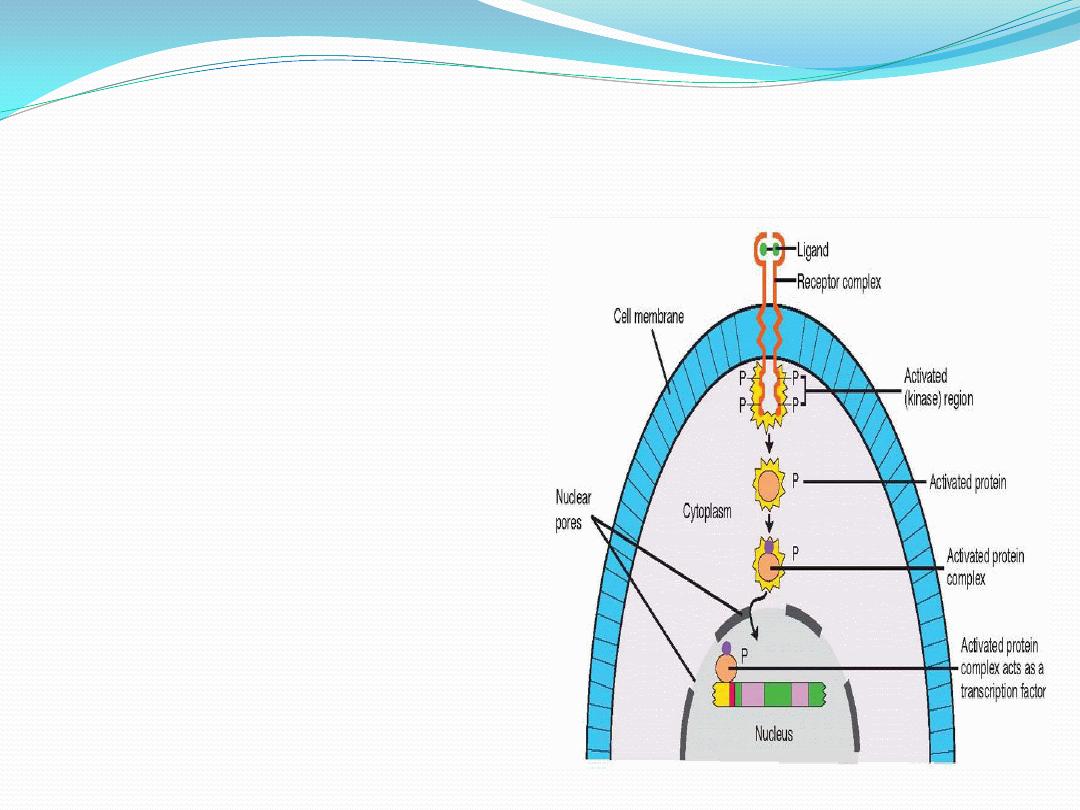
Signal transduction pathways
include a signaling molecule
(the ligand) and a receptor.
The receptor usually spans the
cell membrane and is activated
by binding with its specific
ligand.
Activation usually involves the
capacity to phosphorylate other
proteins, most often as a kinase.
This activation establishes a
cascade of enzyme activity
among proteins that ultimately
activates a transcription factor
for initiation of gene expression.

( 1 ) paracrine interactions
,
whereby proteins synthesized by one cell
diffuse over short distances to interact
with other cells.
The diffusable proteins responsible for
paracrine signaling are called paracrine
factors or growth and differentiation
factors (GDFs).
Paracrine factors act by: signal
transduction pathways either by
activating a pathway directly or by
blocking the activity of an inhibitor of a
pathway (inhibiting an inhibitor),
2 ) juxtacrine interactions
,
does not involve diffusable factors.
Juxtacrine factors may include
products of the extracellular matrix,
ligands bound to a cell's surface, and
direct cell-to-cell communications
is mediated through signal
transduction pathways as well
Lines of communication are established by:

paracrine signaling factors(GDFs)
include
1.
the fibroblast growth factor (FGF)
2.
WNT
3.
hedgehog
4.
transforming growth factor-β

FGFs
Originally named because they stimulate the growth
of fibroblasts in culture
there are now approximately two dozen FGF genes that
have been identified
FGFs are particularly important for
1.
angiogenesis,
2.
axon growth, and
3.
mesoderm differentiation.

Hedgehog Proteins
The hedgehog gene was named because it coded for a
pattern of bristles on the leg of Drosophila that resembled
the shape of a hedgehog.
In mammals, there are three hedgehog genes, Desert,
Indian, and sonic hedgehog.
Sonic hedgehog is involved in a number of developmental
events including
1.
limb patterning,
2.
neural tube induction and patterning,
3.
somite differentiation,
4.
gut regionalization, and others.

WNT Proteins
There are at least 15 different WNT genes that are
related to the segment polarity gene, wingless in
Drosophilia.
WNT proteins are involved in
1.
regulating limb patterning,
2.
midbrain development, and
3.
some aspects of somite and urogenital differentiation
among other actions.

The TGF-β Superfamily
It has more than 30 members and includes
1.
the transforming growth factor-βs, are important for
extracellular matrix formation and epithelial branching
that occurs in lung, kidney, and salivary gland
development.
2.
the bone morphogenetic proteins, (BMP family )induces
bone formation and is involved in regulating cell
division, cell death (apoptosis), and cell migration among
other functions.
3.
the activin family,
4.
the Müllerian inhibiting factor (MIF, anti-Müllerian
hormone), and others.

Other paracrine signaling
molecules
neurotransmitters
They are not just transmitters for neurons but also
provide important signals for embryological
development such as Serotonin and norepinephrine
serving as ligands and binding to receptors to
produce specific cellular responses

Serotonin (5HT)
Regulates a variety of cellular functions including cell
proliferation and migration
Is important for establishing laterality , gastrulation ,
heart development and other processes during early
stages of differentiation

Norepinephrine
Acts through receptors and appears to play a role in
apoptosis (programmed cell death) in the interdigital
spaces and in other cell types

Thank you
Next Lecture:
Gametogenesis

Key words of Gametogenesis
primordial germ cells
Oogenesis , Oogonia, oocytes
Primordial follicle
Unilaminar primary follicle
Multilaminar primary follicle
Secondary ( vesicular , antral )follicle
tertiary follicle (preovulatory follicle )
Ovulation, corpus luteum, corpus albicans
Spermatogenesis: spermatocytosis , spermiogenesis
spermatogonia, primary spermatocytes, 2ndary
spermatocytes, spermatids
